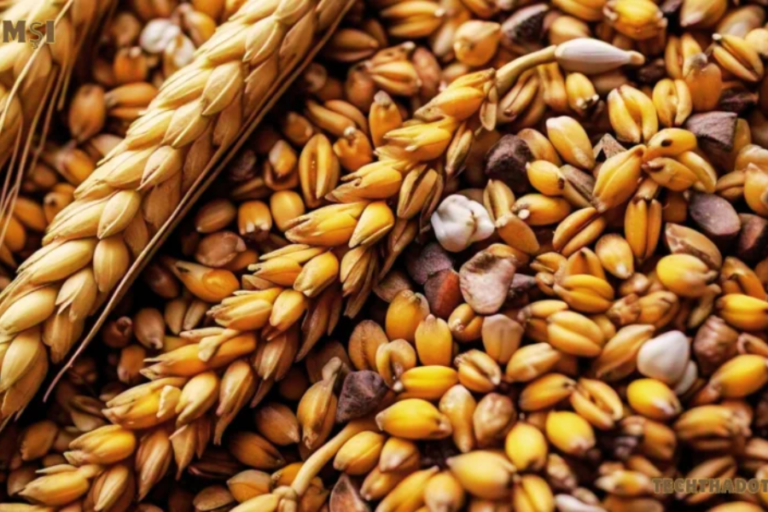Peiscans: Unveiling the Wonders of the Marine World
Peiscans are among the most intriguing marine creatures, captivating the curiosity of both seasoned researchers and casual nature enthusiasts. These fascinating animals exhibit a range of distinct characteristics that set them apart from other marine species, making them a subject of great interest in the field of marine biology. In this comprehensive guide, we will explore the habitat, behavior, diet, reproduction, and conservation status of peiscans, as well as their importance in the ecosystem and their interactions with humans. Whether you’re a dedicated researcher or simply curious about these unique animals, this article will provide valuable insights into the life of peiscans.
Habitat of Peiscans
Peiscans are primarily found in coastal regions, where they thrive in various marine environments. These adaptable creatures are well-suited to both shallow waters and the deeper oceanic zones, showcasing their remarkable ability to survive in diverse conditions. Coastal regions with abundant vegetation and coral reefs are the preferred habitats of peiscans, as these areas provide them with ample food and shelter. Coral reefs, in particular, offer a rich source of nourishment while serving as a protective haven from potential predators.
The presence of peiscans in these marine environments is often considered an indicator of a healthy ecosystem. Their preference for pristine waters and thriving coral reefs underscores their role as both a keystone species and a marker of environmental well-being. Marine biologists and conservationists closely monitor peiscan populations to assess the overall health of the ecosystems in which they reside.
Behavior of Peiscans
Peiscans are known for their highly social behavior, which is one of their most distinctive traits. These animals typically travel in groups, or schools, which can range from a few individuals to large gatherings. This social structure provides numerous benefits, including enhanced protection from predators and increased efficiency in locating food sources.
Communication within peiscan groups is sophisticated and involves a variety of sounds, including clicks, whistles, and chirps. These vocalizations play a crucial role in maintaining group cohesion, coordinating movements, and navigating their environment. Peiscans use these sounds not only to communicate with one another but also to echolocate, a technique that helps them detect prey and navigate through murky waters.
The social nature of peiscans also extends to their interactions with other marine species. They are often observed engaging in symbiotic relationships with other marine animals, such as cleaner fish that remove parasites from their bodies. These interactions further demonstrate the complex and interconnected nature of marine ecosystems, with peiscans playing a vital role in maintaining ecological balance.
Diet of Peiscans
The diet of peiscans is as diverse as their habitats, reflecting their omnivorous feeding habits. Depending on their environment, peiscans consume a wide range of marine organisms, including small fish, crustaceans, mollusks, and plankton. This dietary flexibility allows them to thrive in various marine environments, from coastal waters to deeper oceanic zones.
Peiscans have developed specialized feeding techniques that enable them to efficiently capture and consume their prey. For instance, some species possess sharp beaks that they use to crack open the shells of mollusks and crustaceans. Others have evolved powerful suction mechanisms that allow them to draw in small fish and plankton with ease. These adaptations highlight the peiscan’s ability to exploit a variety of food sources, ensuring their survival in diverse marine habitats.
In addition to their role as predators, peiscans also contribute to the marine food web by serving as prey for larger marine animals, such as sharks and larger fish. This dual role as both predator and prey underscores the importance of peiscans in maintaining the balance of marine ecosystems.
Reproduction of Peiscans
Peiscans exhibit a unique and fascinating reproductive cycle that varies among species. Mating typically occurs during specific seasons, with environmental factors such as water temperature and food availability influencing the timing of reproduction. Female peiscans give birth to live young, a characteristic that sets them apart from many other marine species that lay eggs.
The gestation period for peiscans varies depending on the species but generally lasts several months. During this time, the developing embryos receive nourishment directly from their mothers, ensuring their survival until birth. Once born, the young peiscans are cared for by their mothers, who provide them with protection and nourishment during the early stages of life.
Maternal care is a critical component of peiscan reproduction, as it significantly enhances the survival chances of the offspring. The young peiscans remain with their mothers until they are capable of fending for themselves, learning essential survival skills such as hunting and avoiding predators. This extended period of maternal care is vital for the development of the young peiscans, ensuring that they are well-prepared to thrive in the marine environment.
Conservation Status of Peiscans
The conservation status of peiscans varies depending on the species and their specific habitats. While some species of peiscans are relatively abundant and face minimal threats, others are considered endangered due to a combination of factors such as habitat destruction, pollution, and overfishing. The degradation of coral reefs, in particular, poses a significant threat to peiscan populations, as these habitats are crucial for their survival.
Conservation efforts are being implemented worldwide to protect peiscans and their habitats. These efforts include the establishment of marine protected areas, where fishing and other potentially harmful activities are restricted or prohibited. Additionally, stricter fishing regulations are being enforced to prevent overfishing and bycatch, which can have devastating effects on peiscan populations.
Public awareness and education campaigns are also playing a crucial role in the conservation of peiscans. By highlighting the importance of these animals and the threats they face, conservation organizations aim to inspire action and support for measures that protect peiscans and their marine environments.
Importance of Peiscans in the Ecosystem
Peiscans play a crucial role in maintaining the balance of marine ecosystems. As both predators and prey, they are an integral part of the marine food web, helping to regulate the populations of smaller marine organisms. Their feeding habits, particularly their consumption of small fish and crustaceans, help control the population of these species, which in turn supports the health of coral reefs and other marine habitats.
In addition to their ecological role, peiscans also contribute to the economy of coastal regions through eco-tourism. The presence of peiscans in marine environments attracts tourists, who come to observe these animals in their natural habitats. This influx of tourists provides a source of income for local communities and raises awareness about the importance of marine conservation.
Furthermore, peiscans are often used as indicator species by marine biologists, meaning that their presence or absence can provide valuable information about the health of marine ecosystems. Monitoring peiscan populations allows scientists to detect changes in the environment, such as pollution or habitat degradation, and take appropriate conservation measures.
Interesting Facts about Peiscans
Peiscans are not only important ecologically but also possess a range of fascinating adaptations that make them well-suited to their marine environment. For instance, peiscans have excellent vision, allowing them to see clearly both underwater and above the surface. This keen eyesight is crucial for locating prey and avoiding predators in the complex and often murky marine environment.
Another remarkable adaptation of peiscans is their streamlined bodies, which enable them to swim at high speeds. This agility allows peiscans to efficiently hunt for food and escape from predators. Some species of peiscans can reach speeds of up to 30 miles per hour, making them one of the fastest swimmers in the ocean.
Peiscans also possess a highly developed sense of hearing, which they use to detect prey and communicate with each other over long distances. This acute sense of hearing is particularly important for peiscans that live in deeper oceanic zones, where light is limited, and visibility is reduced. By relying on sound, peiscans can effectively navigate their environment and maintain social connections with other members of their group.
Human Interaction with Peiscans
Humans have had a long history of interaction with peiscans, and these interactions have been both positive and negative. In some cultures, peiscans are revered and considered symbols of good luck and prosperity. These cultural beliefs have led to the creation of various myths and legends surrounding peiscans, highlighting their significance in human history.
However, human activities have also had detrimental effects on peiscan populations. Overfishing, pollution, and habitat destruction have all contributed to the decline of peiscan populations in certain regions. The use of fishing nets, in particular, has resulted in the accidental capture of peiscans, a phenomenon known as bycatch. This unintentional capture can lead to injuries or death for the affected peiscans, further exacerbating the challenges they face.
To mitigate these negative impacts, conservation programs and educational campaigns have been established to promote coexistence between humans and peiscans. These initiatives aim to reduce harmful human activities and encourage the adoption of sustainable practices that protect peiscans and their habitats. By raising awareness about the importance of peiscans and the threats they face, these programs hope to inspire action and support for conservation efforts.
Future of Peiscans
The future of peiscans is closely tied to the actions we take today. Continued research and conservation efforts are essential for understanding and mitigating the threats faced by peiscans and ensuring their survival for generations to come. Protecting their habitats, particularly coral reefs, and implementing sustainable fishing practices are critical steps in safeguarding the future of peiscans.
Public involvement in conservation initiatives is also vital for the long-term protection of peiscans. By supporting marine protected areas, participating in beach cleanups, and advocating for stronger environmental regulations, individuals can contribute to the preservation of these remarkable animals.
As we move forward, it is essential to recognize the interconnectedness of marine ecosystems and the crucial role that peiscans play within them. By working together to protect these animals and their habitats, we can ensure that peiscans continue to
Facts :
- Habitat: Peiscans are found in coastal regions, particularly in areas with coral reefs, where they thrive in both shallow and deep waters.
- Behavior: Highly social, peiscans travel in schools and use a range of vocalizations for communication and echolocation.
- Diet: Peiscans are omnivores, consuming small fish, crustaceans, mollusks, and plankton, with specialized feeding techniques for capturing prey.
- Reproduction: Female peiscans give birth to live young and provide extended maternal care, ensuring the survival of their offspring.
- Conservation Status: Some peiscan species are endangered due to habitat destruction, pollution, and overfishing, leading to conservation efforts such as marine protected areas.
- Ecological Role: Peiscans are vital in maintaining the balance of marine ecosystems, serving as both predators and prey.
- Human Interaction: Peiscans have cultural significance in some societies but face threats from human activities like overfishing and habitat destruction.
- Future Challenges: Conservation and sustainable practices are essential for the future survival of peiscans.
Summary :
Peiscans are fascinating marine creatures found in various coastal and oceanic environments. They thrive in diverse habitats, particularly in areas with coral reefs, which provide food and protection. Known for their social behavior, peiscans often travel in groups and communicate using sophisticated vocalizations. Their diet is varied, including small fish, crustaceans, mollusks, and plankton, which they capture using specialized feeding techniques. Peiscans play a crucial role in marine ecosystems, both as predators and prey, and their presence often indicates a healthy environment.
Peiscans have a unique reproductive cycle, with females giving birth to live young and providing extended maternal care. However, some species face threats from habitat destruction, pollution, and overfishing, leading to conservation efforts aimed at protecting them. These efforts include the establishment of marine protected areas and public awareness campaigns.
The article highlights the ecological importance of peiscans, their interactions with humans, and the ongoing need for conservation to ensure their survival. It also explores the cultural significance of peiscans and the future challenges they face due to human activities.
FAQs:
Q1: Where are peiscans typically found?
A1: Peiscans are primarily found in coastal regions, especially in areas with abundant vegetation and coral reefs, where they can thrive in both shallow and deep waters.
Q2: What do peiscans eat?
A2: Peiscans have a diverse diet, including small fish, crustaceans, mollusks, and plankton. They use specialized feeding techniques to capture their prey.
Q3: How do peiscans communicate?
A3: Peiscans communicate using a variety of sounds, such as clicks, whistles, and chirps, which help maintain group cohesion, coordinate movements, and navigate their environment.
Q4: What is the conservation status of peiscans?
A4: The conservation status of peiscans varies by species. While some are relatively abundant, others are endangered due to habitat destruction, pollution, and overfishing.
Q5: How do peiscans reproduce?
A5: Female peiscans give birth to live young and provide extended maternal care, ensuring the survival and development of their offspring.
Q6: Why are peiscans important in marine ecosystems?
A6: Peiscans play a crucial role in marine ecosystems by regulating populations of smaller marine organisms as both predators and prey, contributing to ecological balance.
Q7: How do humans impact peiscans?
A7: Human activities such as overfishing, pollution, and habitat destruction negatively impact peiscans. Conservation efforts are underway to mitigate these effects.
Q8: What can be done to protect peiscans?
A8: Protecting peiscans involves establishing marine protected areas, enforcing stricter fishing regulations, and raising public awareness about the importance of marine conservation.







